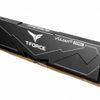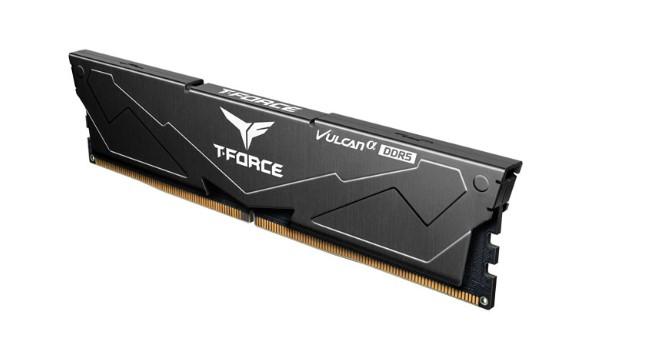Introduction
TeamGroup T-Force VULCANα 6000 CL38 DDR5
6000 MHz CL38 32 GB (2x 16 GB)
VULCANα is a more budget-friendly series from Teamgroup than the Delta RGB, which we checked in 6000 CL40 and 7200 CL34 variants. They are mainly known for memory but also have SSDs, memory cards, USB drives, mobile accessories, and peripherals. The provided sample is from a VULCANα series. It's the mid-tier in the TeamGroup TForce offer, as it offers frequencies up to 6000 MHz. A quick reminder - DDR5 is the newest technology to hit the market, make headlines, and break world records. DDR5 already set spectacular results in overclocking (of course, using the LN2), as even 11136 MHz. DDR4 RAMs operate on a single 64-bit bus, while DDR5 has two 32-bit buses (plus, in both cases, an additional 8-bit for ECC). As a result, a single module is identified as Dual Channel, while two are identified as Quad Channel. However, the solution itself does not match the throughput of HEDT platforms with processors with a four-channel controller. The internal (A / B) channels of DDR5 RAM also share the RCD (Register Clock Driver), which provides more output signals and more extended pulse reading (8 vs. 16). The DDR5 comes with a Power Management Integrated Circuit (PMIC) from the most important things you need to know. It's responsible for controlling voltage changes, optimizing the energy draw, and making it less demanding for the motherboard controller. The DDR4 nominal voltage is 1.2 V; for the DDR5, it's 1.1 V. Typical XMP voltage for the older type of memory is 1.35V (sometimes 1.45 V); now, it's mostly 1.25 V. Speaking of the XMP, till now, it was 2.0 revision, with the introduction of the DDR5 we've got the rev 3.0. The main difference is that the number of profiles has increased from three to five (three for the manufacturer settings and two placeholders for the users). After this short introduction – let's present a bit of the review sample. There are two color variants, black and red.
Our sample is the highest frequency kit from the VULCANα series, with a 6000 MHz clock, CL38-38-38-78, at 1.25V. The range is from 5200 to 6000 MHz. There's also a Vulcan series aimed at Intel systems (with the XMP profile and frequencies up to 6400 MHz). Overall, the TeamGroup TForce Vulcanα DDR5 memory kit is a good option for those looking for high-enough performance memory with decent latency for AMD systems. There's no RGB applicable, so there will be no listing of compatible systems here. It's a series with an EXPO profile.The height of the memory module is 33 mm, so it's a low-profile form, which should cause little to no problems with the (air) CPU coolers. As for compatibility – there's a 600 series from AMD.
The series is not equipped with RGB, so the LED enjoyers should look elsewhere. We'll check the kit only on two platforms this time, with Z790-based motherboards (Asus Z790 Maximus Hero) combined with the Intel Core i9 13900K and the Asrock X670E Steel Legend combined with an AMD Ryzen 9 7900X. This time around, the used GPU is the Nvidia Geforce RTX 4090, so it shouldn't be a limiting factor for the memory performance. We are traditionally going to try and squeeze something more out of it, so the standard 6000 MHz probably is not the last word here (or at least we might manage to fine-tune the latencies), at least on the Intel platform. You can always stay safe and stick to the advertised frequency and latencies using the EXPO. The default parameters look great, and so are the visual aspects – we need to check the performance then. A limited lifetime warranty backs the VULCANα RGB series. Ok, next page, please.


